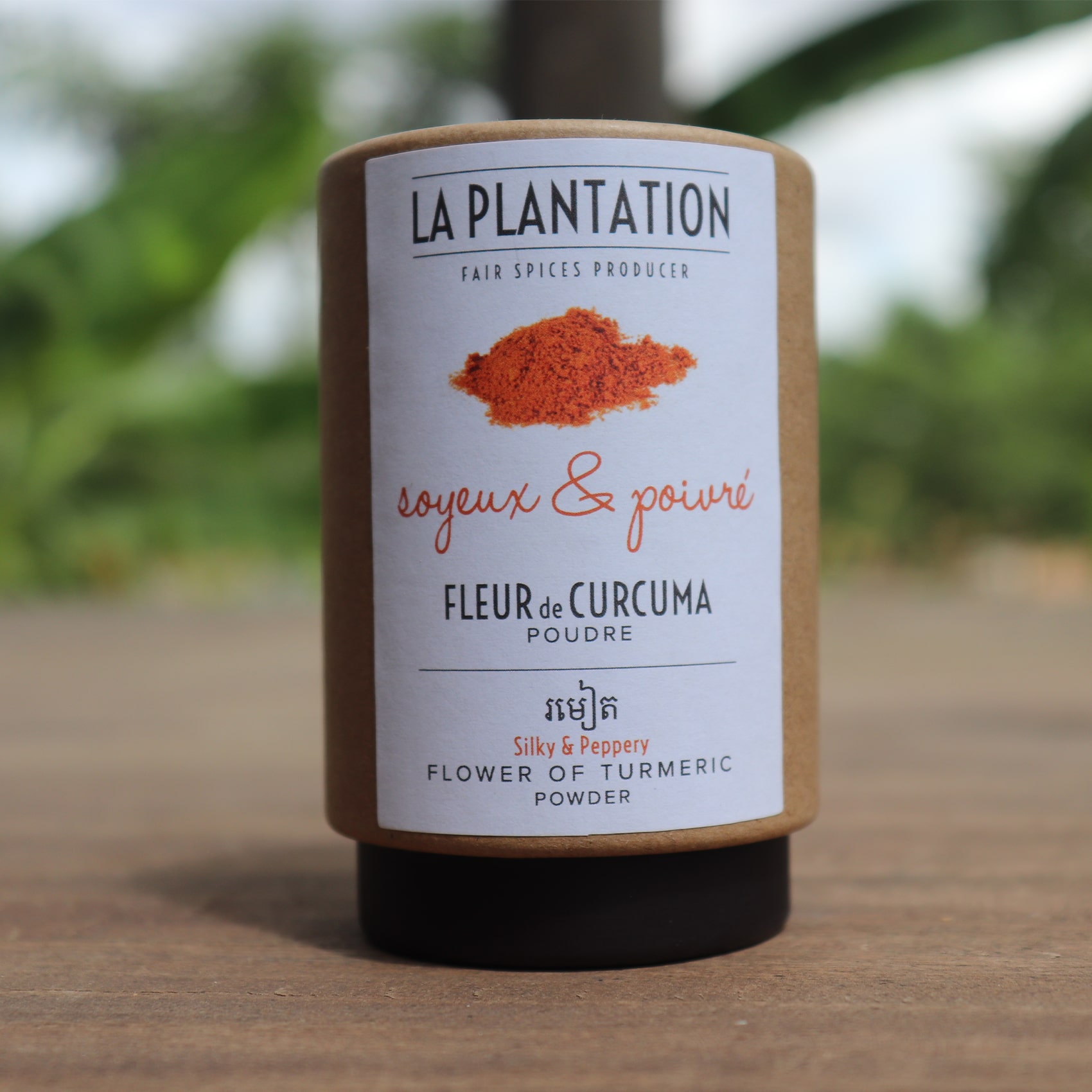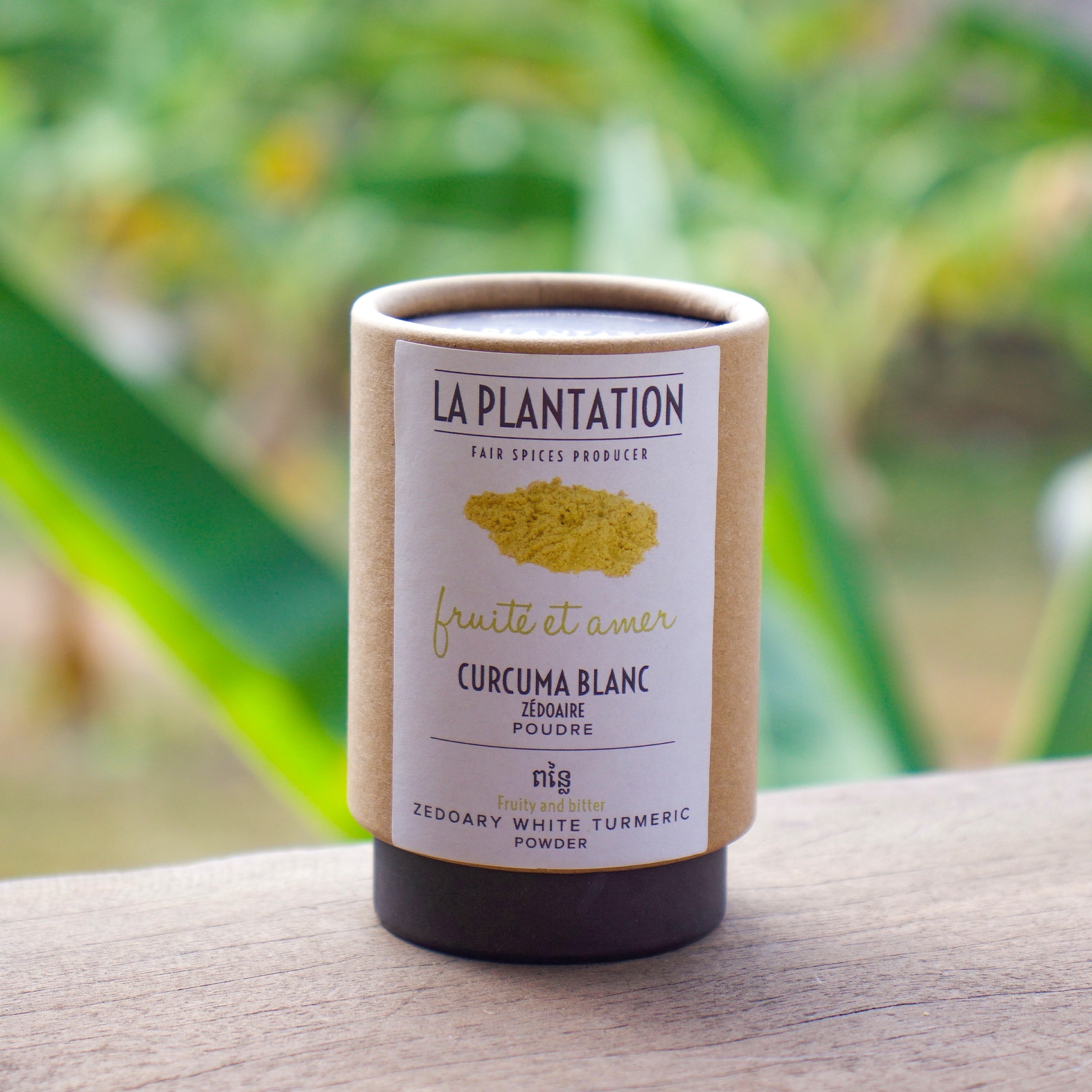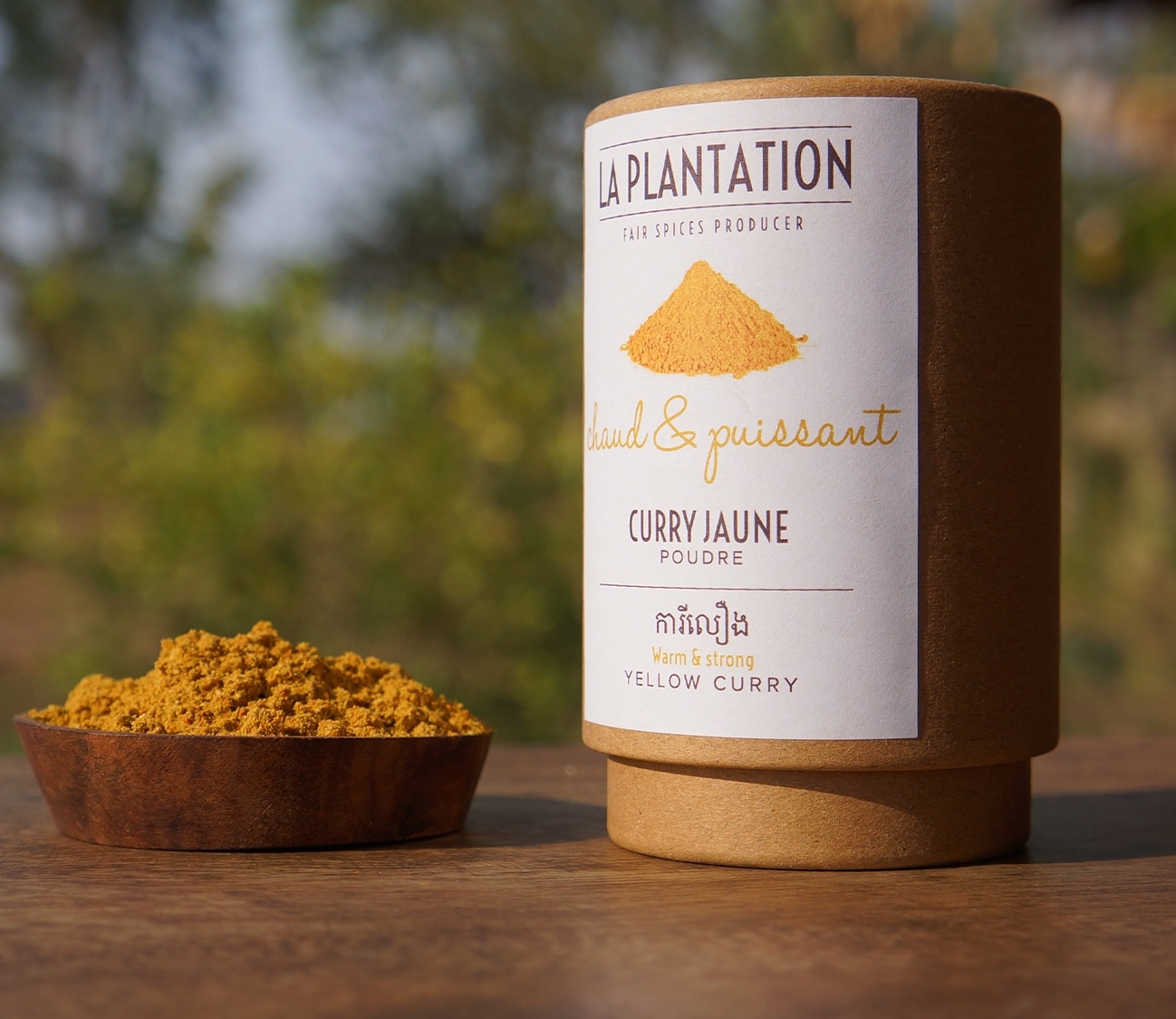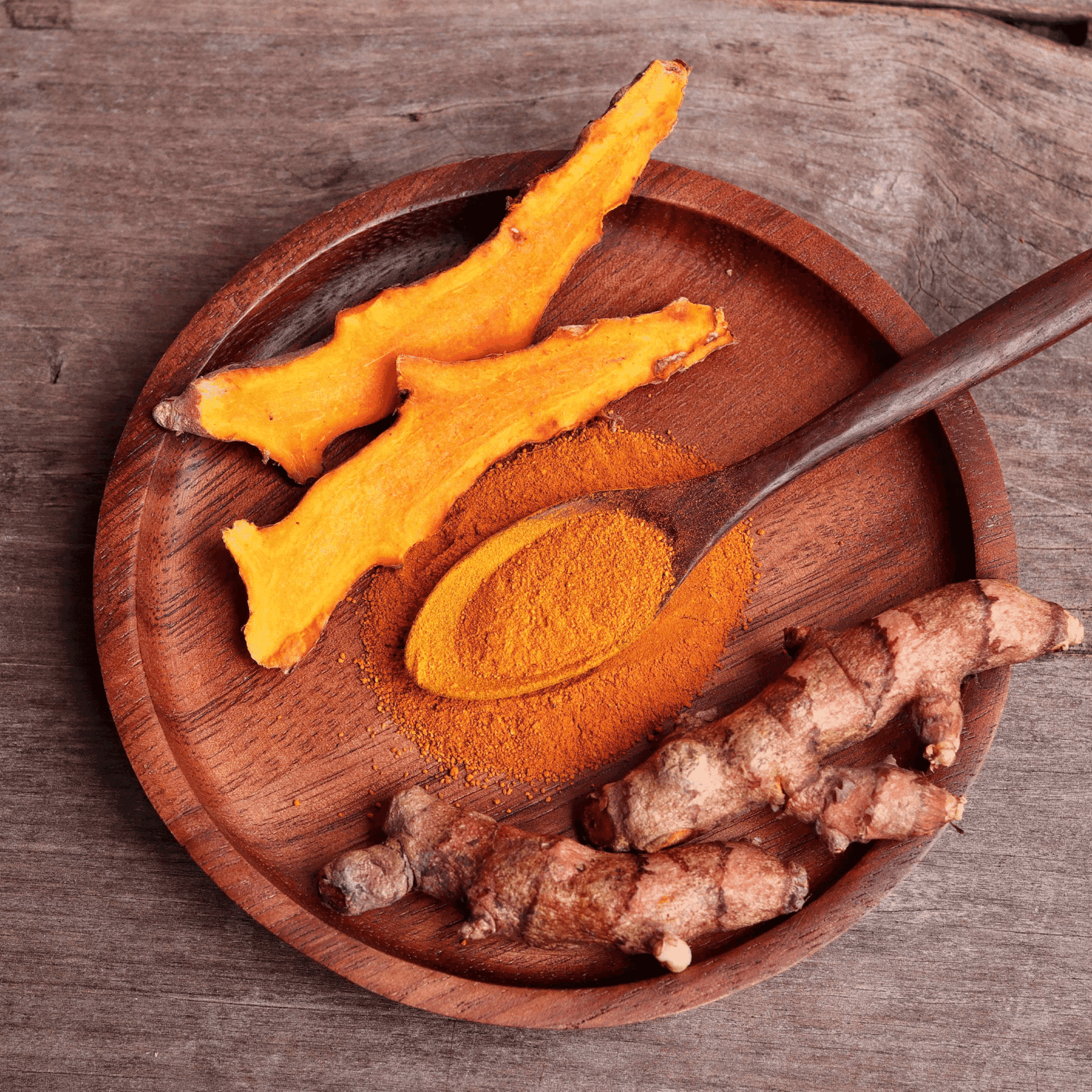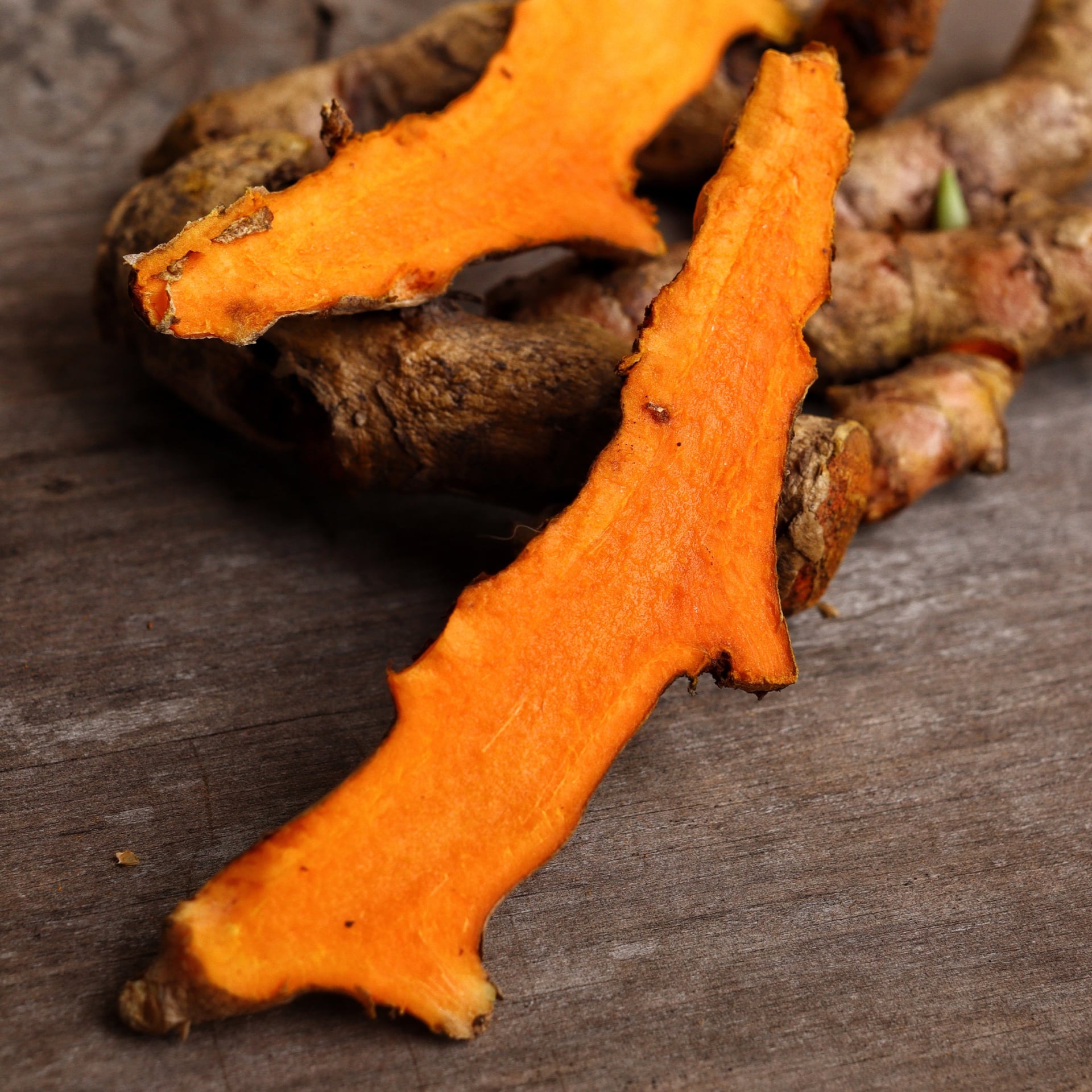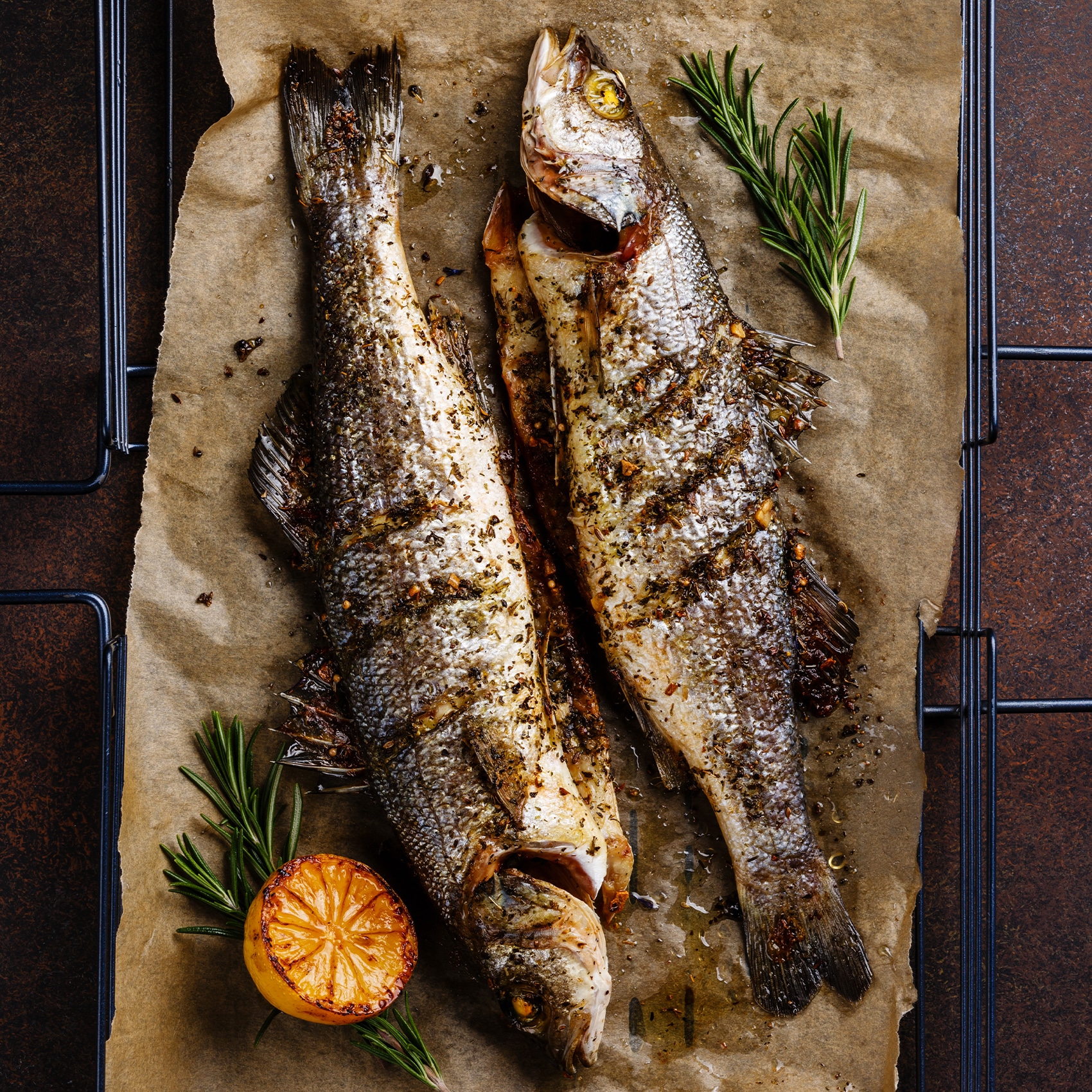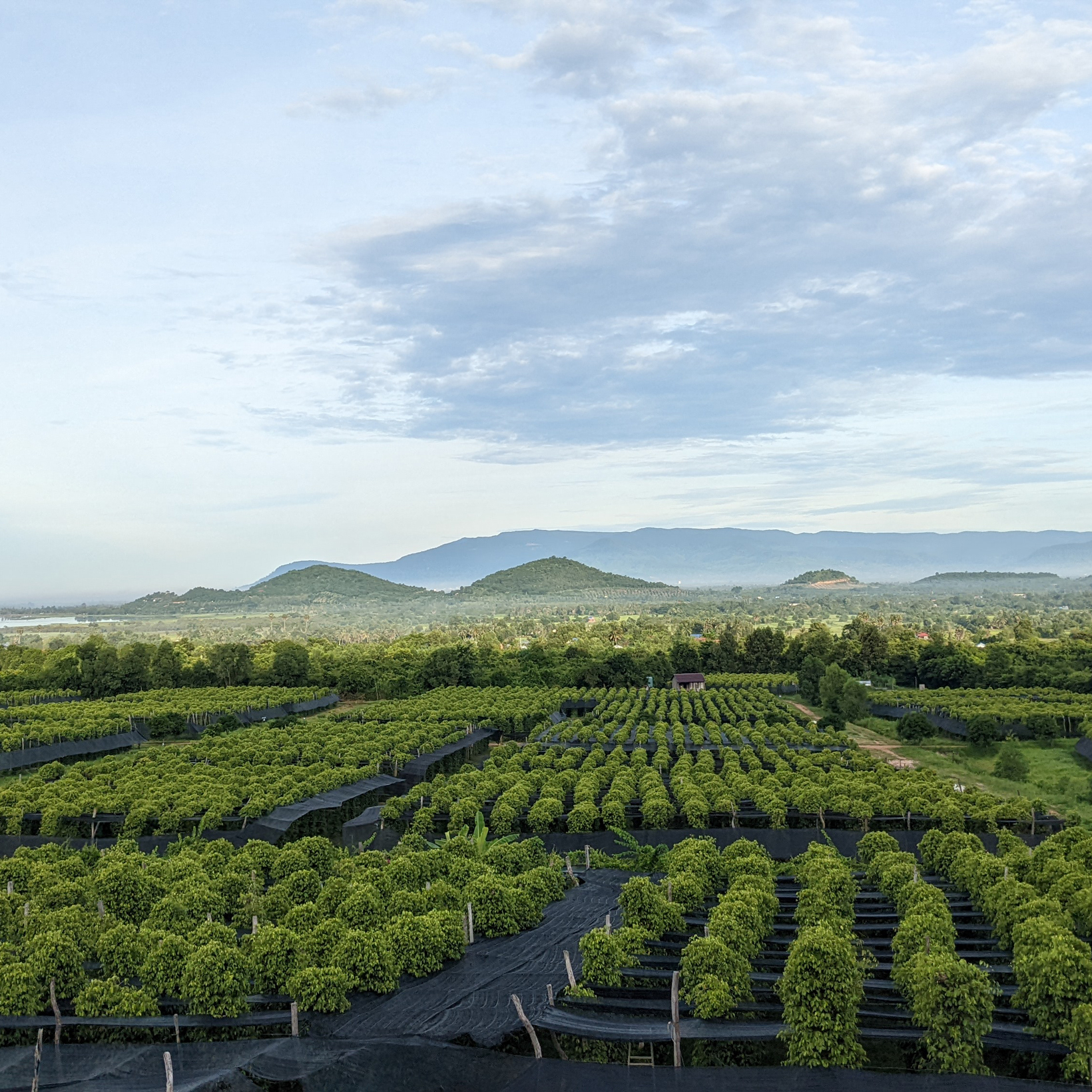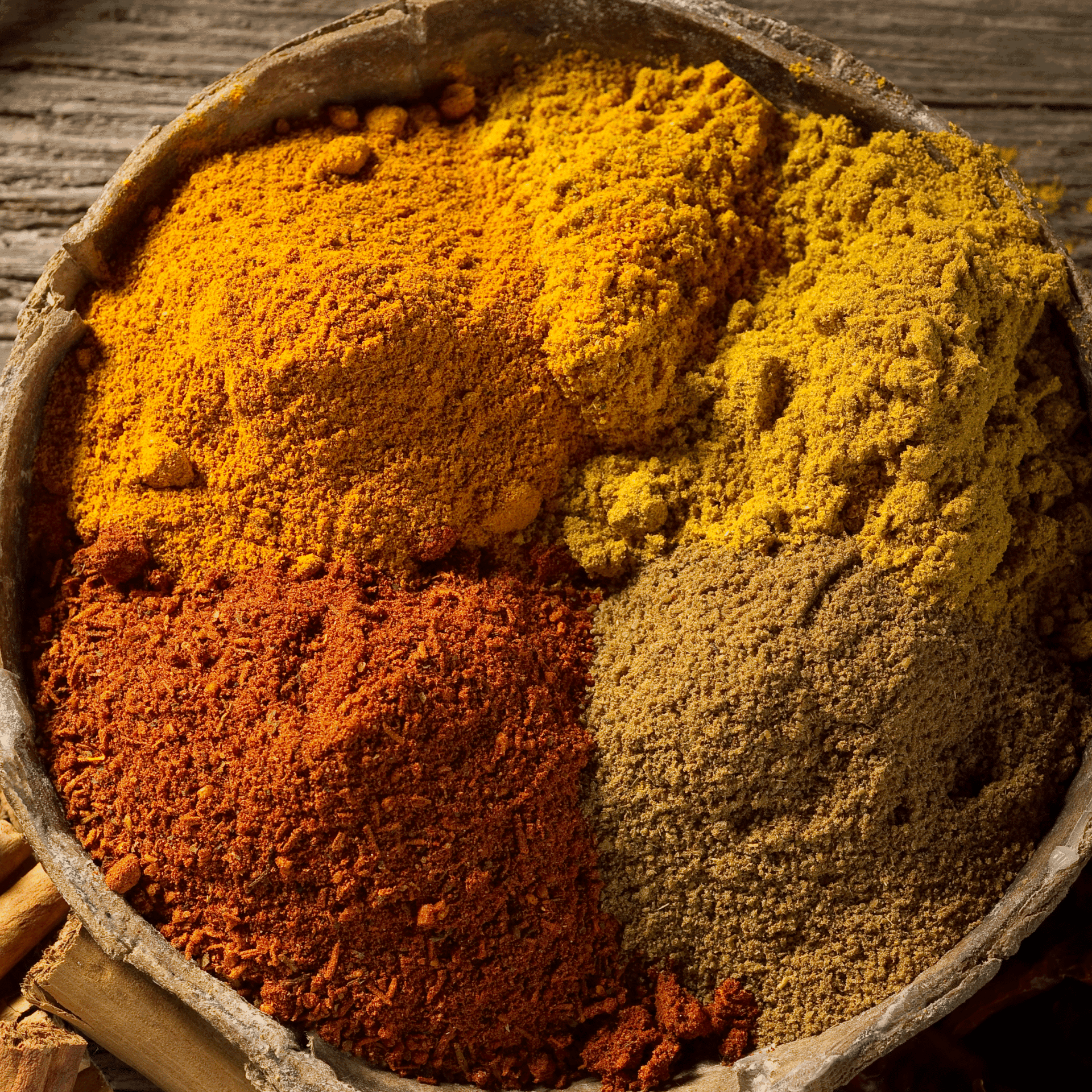
The Curry: A Complete Guide to this iconic spice blend
Sommaire
Curry is one of the most popular spice blends in the world. Found in the cuisines of Asia, Europe, and the Caribbean, it has the power to turn any dish into an aromatic experience.
But behind this familiar name lies a world of diversity — different colours, intensities, and regional interpretations.
The word curry refers to a mixture of spices, which can vary according to region and tradition. Turmeric, coriander, cumin, pepper, and ginger often form its base, but each culture adds its own signature. From Madras curry to Japanese curry, and from Khmer to Thai curries, every version tells a story and carries a unique identity.
In this guide, you’ll learn about the origins of curry, its main varieties, the key spices that compose it, and how to use it in everyday cooking.
Our goal: to help you understand this essential spice blend and make it part of your daily recipes.
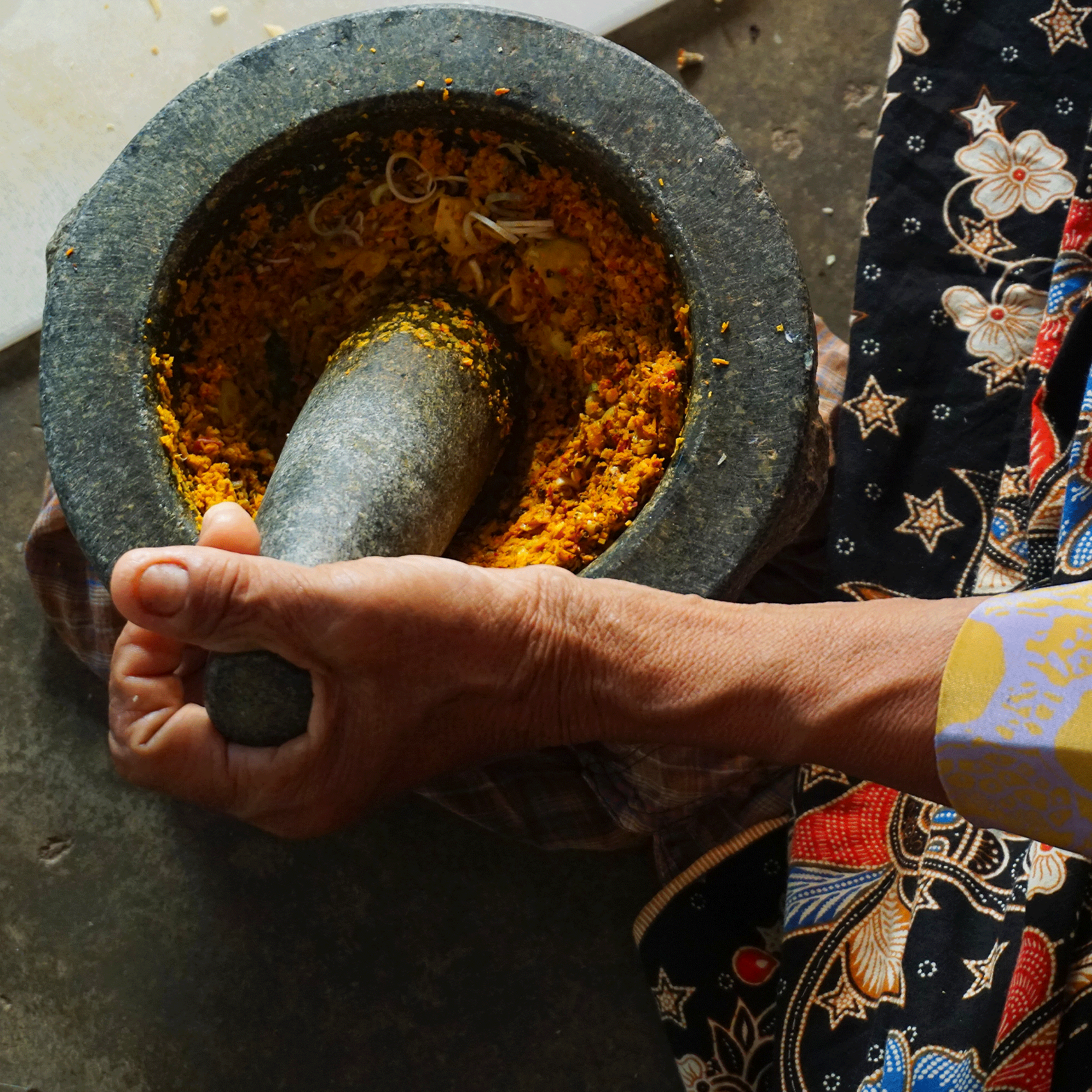
What Is Curry?
In the West, the word curry usually refers to a blend of spices used to flavour Indian or Southeast Asian dishes.
It also designates the dishes made with that blend.
In India, however, curry or kari refers to saucy, spiced dishes, while the spice blend itself is called masala — a Hindi word meaning “mixture.”
In cooking, curry is most often found as a powder, but in Asia you’ll also find it as pastes or even fresh curry leaves, depending on the region and culinary traditions.
History of Curry
Curry is often linked to Indian cuisine, but its origins are much older and wider. The word comes from the Tamil term kari, meaning “sauce” or “dish served with rice.”
As far back as ancient times, Indian cooks were using spice blends to flavour vegetables, meat, and lentil dishes.
Over centuries, each region developed its own style, creating a rich culinary tradition that became part of India’s cultural identity.
From the Indian subcontinent to Europe
During the 18th century, under British colonial rule, curry crossed the seas.
British traders and officers, captivated by Indian flavours, wanted to recreate them once they returned home.
Thus, the curry powder was born — a simplified, ready-to-use version designed for Western kitchens.
This invention spread rapidly and helped make curry a global culinary icon, inspiring countless regional and cultural adaptations.
Curry across cultures
Each country has given curry its own local character, adjusting ingredients and flavours to its climate, produce, and tastes.
In India
Curry is an everyday dish. Recipes vary from region to region — spicier in the South, milder in the North, and often based on lentils, chickpeas, or vegetables.
In Thailand
Thai curries come in red, green, or yellow versions, depending on the type of chilli and herbs used. Coconut milk, lemongrass, and galangal add a refreshing, creamy balance.
In Japan
Known as kare raisu, Japanese curry is mild, slightly sweet, and usually served with rice and vegetables.
Introduced by the British in the 19th century, it’s now considered a national comfort food.
In the Caribbean
Curry blended with African and European traditions, creating dishes such as Jamaican chicken curry or Trinidadian goat curry — rich, spicy, and deeply aromatic.
In Sri Lanka
Sri Lankan curries are bold and fiery, often made with coconut milk and toasted spices like cinnamon, clove, and cardamom.
These interpretations reveal how curry has adapted across the world — shaped by history, geography, and culture, yet always celebrating warmth and flavour.
The Khmer Curry tradition
In Cambodia, curry holds a special place. It’s at the heart of emblematic dishes such as Amok or Saraman, which perfectly reflect Khmer cuisine — fragrant, balanced, and harmonious.
The base of many Cambodian curries is the kroeung, a paste made from fresh local ingredients like lemongrass, galangal, turmeric, garlic, and kaffir lime leaves.
This aromatic mixture is then combined with coconut milk, fish sauce, and palm sugar, creating a sauce that’s rich, creamy, and subtly sweet.
Khmer curry is typically milder than its Thai counterpart, yet just as complex and satisfying. It highlights the freshness of local produce and the delicate balance of spices and herbs.
Popular versions include fish curry, chicken curry, or tofu curry, all served with fragrant rice and seasonal vegetables.
This gentler, more rounded approach perfectly illustrates the Khmer culinary philosophy — seeking harmony between spice, sweetness, and nature.
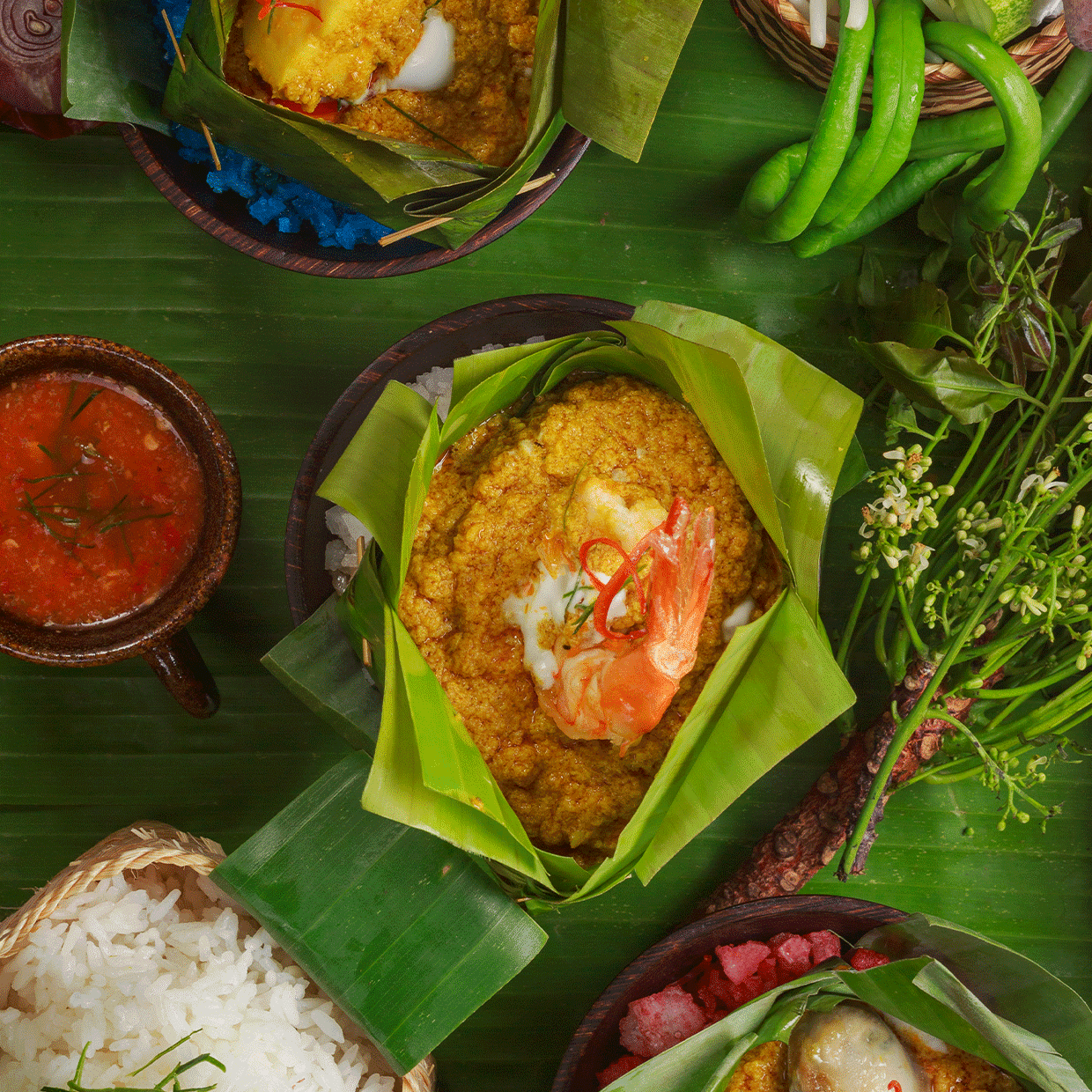
The Difference between Curry powder, paste & curry leaves
Curry comes in several forms, each suited to different cuisines and cooking styles.
Curry Powder
This is the most common form in Indian and Western cooking.
It’s a dry blend of ground spices, easy to use for seasoning sauces, marinades, vegetables, or soups.
Curry Paste
Typical of Thai and Cambodian cooking, curry paste combines fresh ingredients such as lemongrass, galangal, garlic, and chilli.
It’s usually mixed with coconut milk to create thick, creamy curries full of depth and aroma.
Curry Leaves
Curry leaves come from the Murraya koenigii tree, native to India. They have a lemony, slightly bitter fragrance and are used fresh or dried to flavour dishes at the start of cooking.
Important distinction: Curry leaves, turmeric, and curry powder are not the same thing.
-
Curry leaves are aromatic herbs used for seasoning.
-
Turmeric is a single spice, known for its bright orange colour and earthy taste.
-
Curry powder is a blend that often includes turmeric — but not always the leaves.
In short: every curry blend contains turmeric, but not all turmeric is curry, and curry leaves are a completely separate ingredient.
In the next section, we’ll dive into the composition of curry powder, explore the main varieties, and discover how to use them — including the authentic Khmer curry blends from La Plantation in Kampot, Cambodia.
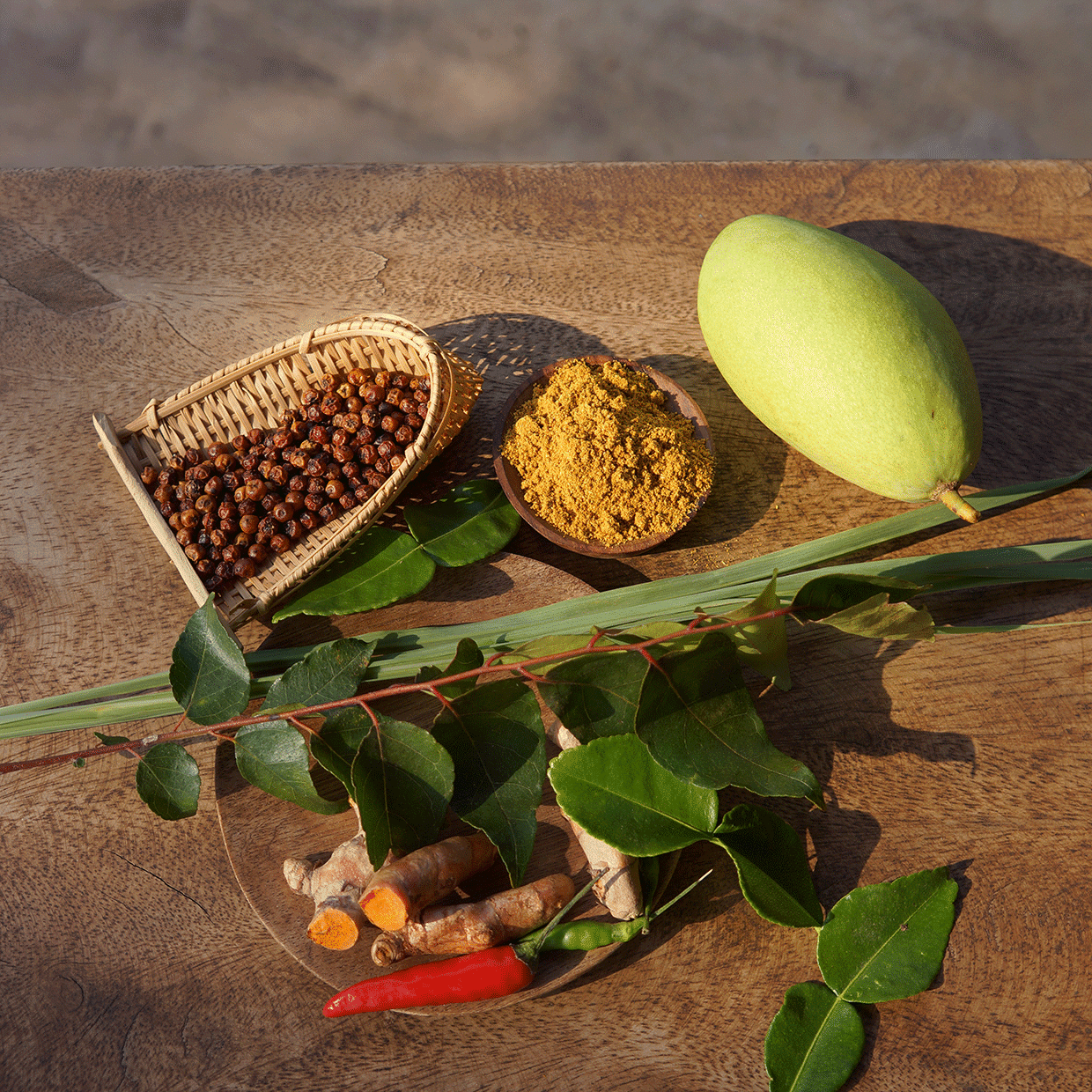
Curry powder blends and composition
What is Curry Powder made of?
Curry powder is a blend of dried and ground spices, carefully balanced to create depth and harmony.
There’s no single recipe, but some spices appear in almost every mix:
-
Turmeric: brings the signature yellow colour and an earthy tone.
-
Cumin: adds warmth and a slightly bitter edge.
-
Coriander: balances the blend with fresh, citrus-like notes.
-
Ginger: gives liveliness and gentle heat.
-
Cardamom, cinnamon, or cloves: provide roundness and a sweet-spicy aroma.
-
Pepper or chilli: add intensity and depth.
This combination of warm, sweet, and spicy elements gives curry its characteristic richness.
It’s not the number of spices that defines a good curry, but the balance between them.
Main types of Curry around the world
Each region has developed its own blend, reflecting its local ingredients and traditions.
Below is a simplified overview of some of the most famous curry styles:
| Type of curry | Origin | Flavour profile | Spiciness | Main ingredients |
| Madras curry | South India | Warm, earthy, slightly smoky | 🌶️ 🌶️ | Turmeric, cumin, coriander, chilli, fenugreek, mustard |
| Colombo curry | French Caribbean | Fruity, slightly bitter | 🌶️ | Turmeric, coriander, cumin, fenugreek, mustard, black pepper |
| Katsu curry | Japan | Sweet, round, mild | 🌶️ | Turmeric, cumin, ginger, cinnamon, nutmeg, dried onions |
| Khmer green curry | Cambodia | Citrusy, vegetal, fresh | 🌶️ | Lemongrass, turmeric, green pepper, sweet chilli, sea salt |
| Khmer red curry | Cambodia | Vegetal, aromatic | 🌶️ | Sweet red chilli, lemongrass, turmeric, garlic, long pepper |
| Thai red curry | Thailand | Spicy, sweet-salty, intense | 🌶️ 🌶️ 🌶️ | Red chilli, galangal, garlic, lemongrass, coconut milk |
| Black curry | India | Smoky, bold, slightly roasted | 🌶️ 🌶️ | Black pepper, turmeric, clove, black cardamom |
| Masala curry | North India | Warm, aromatic | 🌶️ 🌶️ | Turmeric, cumin, coriander, ginger, cinnamon, cardamom |
Each variation tells a story — a meeting of spice, culture, and creativity.
La Plantation’s Khmer curry blends
At La Plantation, each curry blend is crafted with care, using freshly harvested spices from our farm in Kampot, southern Cambodia.
Every recipe reflects the local Khmer tradition, highlighting the natural balance of flavour, colour, and aroma.
Khmer green curry
Made with lemongrass, sweet long green chilli, dehydrated green Kampot pepper, turmeric, and Kampot sea salt, this blend is a tribute to Khmer cuisine.
It’s fragrant but not spicy, with bright citrus and vegetal notes.
Perfect for soups, white meat, fish, or creative dishes like grilled halloumi with green curry.
Khmer red curry
A blend of sweet long red chilli, lemongrass, garlic, red long pepper, turmeric, and Kampot sea salt.
It delivers a warm, balanced heat and a rich, complex aroma.
Ideal for tofu, chicken, duck, beef, prawns, or stir-fried vegetables.
Yellow curry
Slightly spicier than the previous ones, our yellow curry stands out for its high curcumin content (over 10%), giving it both vibrant colour and wellness benefits. When combined with Kampot black pepper, curcumin becomes more easily absorbed by the body.
This curry is perfect in chicken sauces, homemade mayonnaise, or even a vinaigrette for a bright, aromatic touch.
Freshness and traceability
Artisan curry powders have a major advantage: they’re made from spices harvested and processed the same day — ensuring freshness, traceability, and maximum flavour.
Unlike industrial blends, these mixes contain no additives or preservatives.
Each one reflects the authentic quality of the ingredients and the expertise of local producers.
At La Plantation, all spices are grown, harvested, and processed on our farm in Kampot, then dried naturally to preserve their essential oils, aromas, and nutrients.
The result: a 100% natural and ethical product, true to Cambodia’s rich terroir.
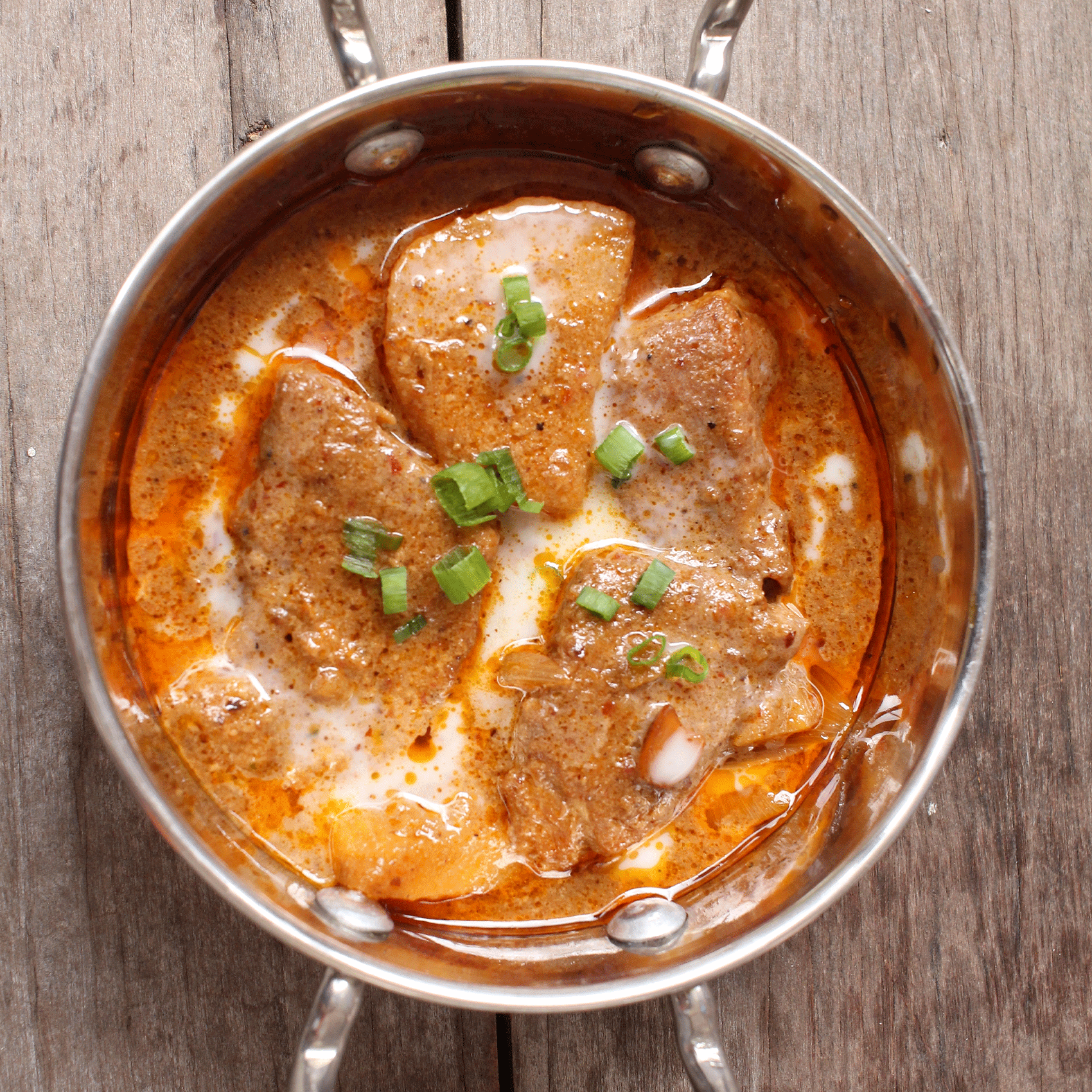
How to use curry paowder?
Curry powder is one of the most versatile spice blends in the kitchen. It adds flavour, colour, and depth to both simple and elaborate dishes, and pairs beautifully with vegetables, meats, fish, or plant-based recipes.
Make a quick curry sauce
The easiest way to use curry powder is to prepare a simple, fragrant sauce:
-
Mix one teaspoon of curry powder per person with coconut milk or cream.
-
Heat gently, stirring to release the aromas — but avoid boiling to preserve the delicate flavours.
-
Adjust intensity to taste: green and red Khmer curries are mild and aromatic. Yellow curry offers a gentle heat and bright colour.
This base works perfectly with chicken, fish, tofu, or vegetables, and can also be used as a marinade or sauce for rice and noodles.
Everyday Recipe Ideas with Curry Powder
Curry isn’t limited to Asian-style dishes. It can bring creativity and warmth to your daily cooking:
-
Classic dishes: chicken curry, prawn curry, coconut vegetable curry, or lentil curry.
-
Omelettes and scrambled eggs: add a pinch for a lively, aromatic twist.
-
Purees and gratins: stir into mashed potatoes or white sauce for extra depth.
-
Toasted sandwiches: sprinkle curry in grilled cheese or croque-monsieur for subtle spice.
-
Rice and stir-fries: mix directly into rice or vegetables for instant flavour.
-
Mussels with yellow curry: a simple yet elegant dish, ready in minutes.
-
Sauces and dressings: curry mayo or vinaigrette for a creative, colourful finish.
-
Snacks & dips: add to hummus, yoghurt sauces, or creamy dips for a Cambodian-inspired touch.
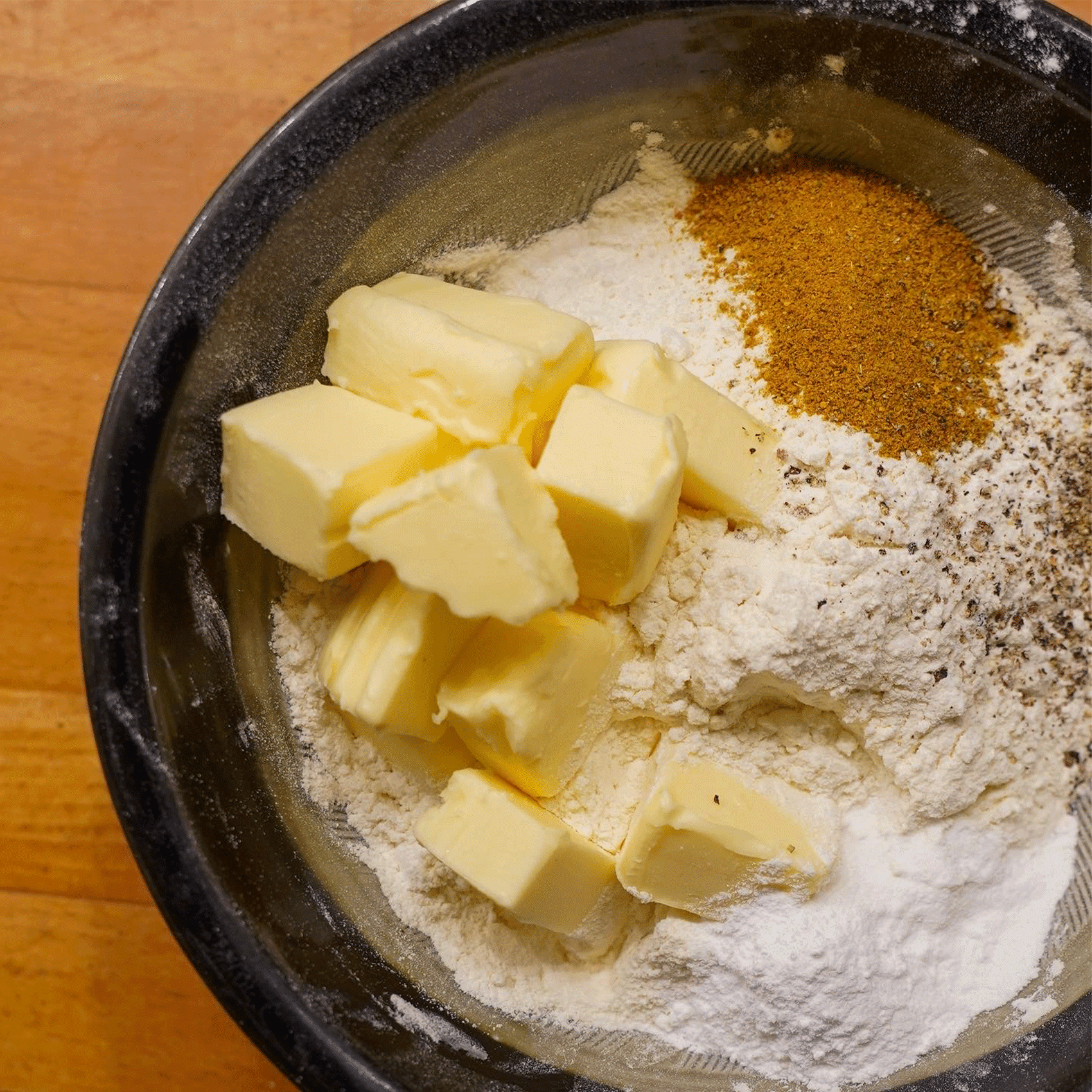
Other forms of curry
Curry is not limited to powder — several other forms exist, each offering its own aroma, texture, and culinary use.
Curry Leaves
Curry leaves come from the Murraya koenigii tree, native to India.
They are not the same as curry powder, even if the name might suggest it.
Used fresh or dried, these small green leaves release a subtle lemony and slightly bitter aroma when lightly fried in oil or ghee.
They’re a key ingredient in South Indian cooking, used at the start of curries, soups, and lentil dishes.
They can also bring a surprising twist to sweet and savoury recipes — like roasted figs with curry leaves or coconut milk sauces.
Curry Pastes
Popular in Thai and Cambodian cuisine, curry pastes combine fresh spices, herbs, and aromatics such as lemongrass, garlic, galangal, and chilli.
They create a deep, complex base for soups and sauces, particularly when blended with coconut milk.
However, many industrial curry pastes include added sugar, salt, or preservatives.
For a healthier and more authentic flavour, it’s best to use freshly ground curry powder or to make your own paste from scratch.
Vadouvan
Vadouvan is a French-inspired curry blend that originated from the Pondicherry region in India, a former French colony.
It’s milder than most curries, with a rich, toasted aroma thanks to shallots, garlic, and gently roasted spices.
Perfect for seafood dishes, creamy sauces, or even vegetable gratins, vadouvan bridges the gap between Eastern spiceand Western refinement.
